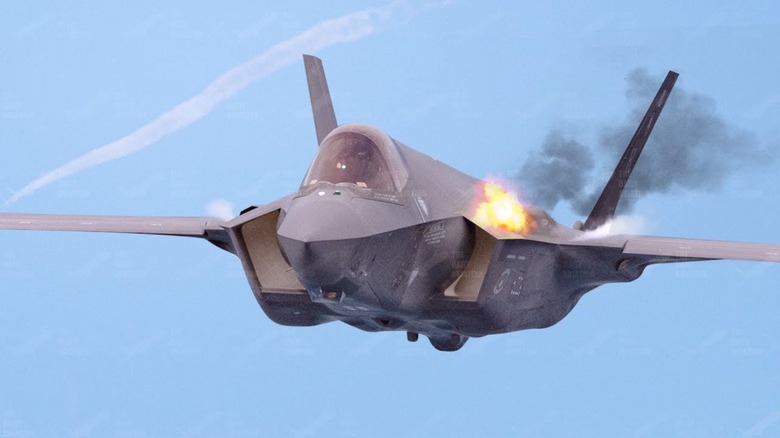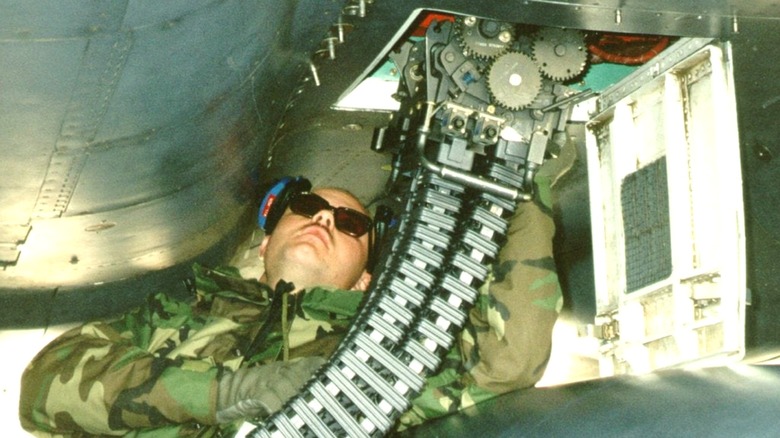Why Modern Fighter Jets Don't Eject Spent Shell Casings
When you fire a gun, whether it's a shotgun, rifle, pistol, or anything requiring a bullet, a shell casing is ejected or removed. At gun ranges, these spent shell casings are often recovered and recycled, which makes sense, as they're primarily constructed of brass. Recycling them is a no-brainer, but for much of aviation history, it didn't work like that. The P-51 Mustang flew throughout much of World War II, and its six .50 caliber machine guns dropped tons of spent shell casings all over the world's battlefields.
Modern fighters function a bit differently, and while they rarely fire their cannons, they are still installed. This is because, like many weapons, it's better to have it and not need it than to need it and not have it. Nowadays, cannons are reserved for close combat, but they're almost never utilized because air combat is typically conducted beyond line of sight. Missiles are fired at radar blips, and that's how dogfighting works. Still, they have cannons, including the F-35 Lightning II, so what happens to their spent casings?
While previous aircraft dumped them, modern fighter jets don't. Instead of ejecting the casings, they're collected in various systems for several reasons. For one, ejecting hundreds of heavy brass shell casings would continuously reduce the weight of the aircraft, which could destabilize flight. The main reason they're not ejected has to do with the potential damage they might cause. WWII fighters didn't fly nearly fast enough to create a problem, but modern fighters are supersonic, and they could damage themselves if ejected casings reenter aircraft systems as foreign object debris (FOD).
Ammunition handling systems in modern fighter jets
Modern fighter jets like the F-35 don't use ammunition belts like you might see in a movie. Ammunition belts still exist, and they feed a variety of machine guns using metal links that chain the ammunition together. When fired, the links and spent casings fall to the ground. Modern fighters use something called a linear linkless ammunition handling system, which eschews the practice of linked ammunition. Instead, rounds are channeled through a belt that delivers each one at a high rate of speed.
These systems usually feed the rounds via one belt and remove them for storage with another. The F-35A's GAU-22/A is a four-barrel 25mm cannon capable of firing up to 3,300 rounds per minute. The aircraft only carries 180 rounds, so bullet conservation is challenging, as squeezing the trigger for a second or two would deplete the aircraft's stores. This isn't a problem since the cannon is only meant to be used for the rare occurrence of short-range combat.
One of the most famous flying cannons is the U.S. Air Force's A-10 Thunderbolt II. It uses a GAU-8/A cannon capable of firing up to 4,200 shots per minute. The ammunition is fed via a similar system, so the shell casings are returned to storage for the duration of the flight. Keeping them onboard for the A-10 is less about recycling or reducing potential damage than it is about weight. The shell casings act as ballast for the plane's center of gravity, so ejecting them runs the risk of destabilizing the aircraft's flight.

